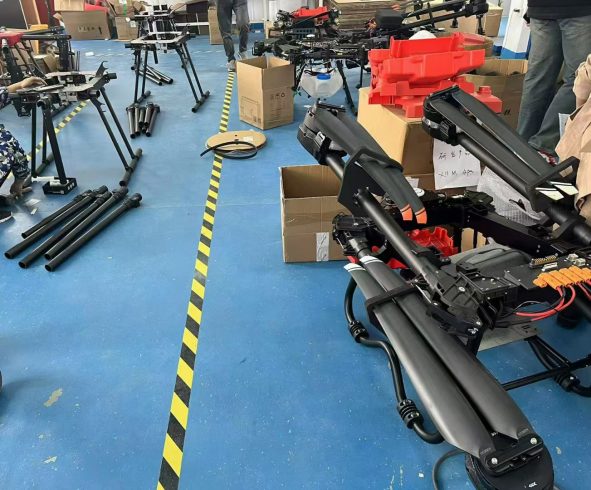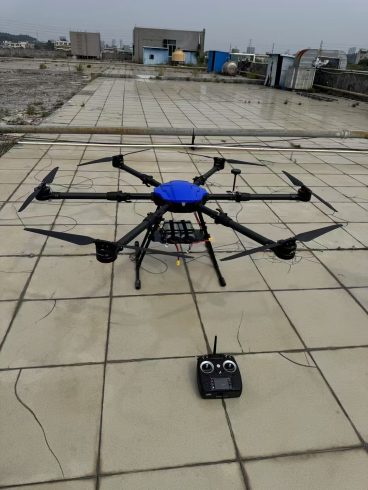![图片[1]-Drone Spraying Cost Analysis: Breaking Down ROI for Modern Farms-msoen](https://www.msoen.com/wp-content/uploads/2025/04/2caef68db4184641-768x1024.jpg)
As farmers increasingly adopt drone spraying to enhance efficiency and sustainability, understanding the true costs and savings of this technology is critical. This article provides a comprehensive cost analysis of drone spraying, comparing it to traditional methods and revealing how farms of all sizes can achieve a rapid return on investment (ROI).
- Upfront Costs of Drone Spraying A. Drone Purchase
- Entry-Level Models: $3,000–$5,000 for 5–10L payload capacity (ideal for small farms).
- Professional Models: $15,000–$25,000 for 20–30L tanks, AI analytics, and swarm capabilities.
- Accessories: $500–$2,000 for spare batteries, nozzles, and transport cases. B. Software & Training
- Flight Planning Apps: $300–$1,000/year for advanced mapping and analytics.
- Operator Training: $500–$2,000 for FAA Part 107 certification (U.S.) or local licenses. C. Infrastructure
- Charging Stations: $200–$1,000 for solar or rapid-charging hubs.
- Maintenance Kits: $100–$500 annually for propeller replacements and sensor calibration.
Total Initial Investment: $4,000–$30,000, depending on farm size and drone capabilities.
- Operational Costs of Drone Spraying A. Labor
- Operator Wages: $20–$50/hour for trained pilots (vs. 5–10 workers for manual spraying).
- Example: Spraying 100 acres takes 5 hours with a drone vs. 40 hours manually. B. Energy & Maintenance
- Battery Costs: $50–$200 per battery (2–4 needed per drone).
- Electricity: $5–$10 per 100 acres (vs. $50–$100 for tractor diesel).
- Repairs: $500–$2,000/year for motor replacements and software updates. C. Chemical Savings
- Reduced Usage: Drones cut pesticide/herbicide needs by 40–60% through precision.
- Example: Saving $30/acre on chemicals for a 500-acre farm = $15,000/year.
- Cost Comparison: Drone vs. Traditional Spraying Cost Factor Drone Spraying Tractor/Manual Spraying Labor $100–$500/100 acres $800–$2,000/100 acres
Chemicals $1,200–$2,000/100 acres $2,500–$4,000/100 acres
Fuel/Energy $5–$10/100 acres $50–$150/100 acres
Equipment Depreciation $200–$500/year $1,000–$3,000/year
Annual Savings with Drones: $5,000–$20,000 per 500 acres.
- ROI Calculation: When Do Drones Pay Off? Formula:
ROI (Months) = (Initial Investment ÷ Annual Savings) × 12
Example:
- Initial Cost: $20,000 (professional drone + training).
- Annual Savings: $18,000 (labor + chemicals + fuel).
- ROI: ($20,000 ÷ $18,000) × 12 = 13.3 months.
Most farms recoup drone costs within 12–18 months.
- Hidden Financial Benefits
- Reduced Crop Loss: Early pest/disease detection raises yields by 10–20%.
- Sustainability Incentives: Qualify for USDA/NRCS grants or carbon credit programs.
- Land Valuation: Precision farming practices can increase property value by 5–10%.
- Case Study: Soybean Farm in Illinois
- Farm Size: 1,000 acres.
- Pre-Drone Costs (2022):
- Labor: $45,000.
- Chemicals: $75,000.
- Tractor Fuel/Maintenance: $12,000.
- Total: $132,000.
- Post-Drone Costs (2023):
- Drone Investment: $25,000.
- Labor: $10,000.
- Chemicals: $45,000.
- Drone Energy/Maintenance: $3,000.
- Total: $83,000.
- Net Savings: $49,000 in Year 1 (ROI achieved in 6 months post-harvest).
- Future Cost Projections
- Declining Drone Prices: Entry-level models expected to drop 20% by 2026.
- Battery Advancements: Solid-state batteries could cut energy costs by 50%.
- AI Automation: Reduced need for human intervention, lowering labor expenses further.
Conclusion: Drones Are a Smart Long-Term Investment
While drone spraying requires upfront investment, the dramatic savings in labor, chemicals, and equipment make it a financially savvy choice for forward-thinking farms. As technology advances and costs decline, early adopters stand to gain the most.
Ready to Crunch Your Numbers?
➔ Download Our Free Tool: “Drone Spraying ROI Calculator for Farmers.”
➔ Explore Financing: Learn about USDA grants and leasing options.











暂无评论内容